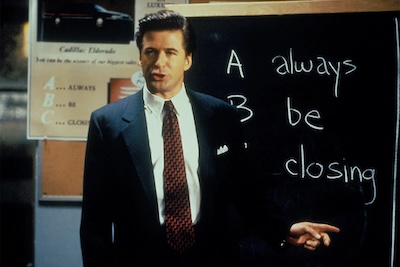The Contending talks to Dying for Sex editor Jon Higgins about cutting Episode 1’s “Good Value Diet Soda” and Episode 6’s “Happy Holidays.”
Dying for Sex editor Jon Higgins says the podcast Dying for Sex is one of his favorite podcasts ever — and not just because he worked on the TV series adaptation.
“I love to laugh-cry,” he says. “I started looking up the science of it, and there are all these chemical reactions that happen when you’re laughing and crying. There’s a balance that resets you, almost like you’re doing a detox.”
Higgins cut the pilot, “Good Value Diet Soda,” and by the time he got to Episode 6’s, “Happy Holidays,” he says he had a better handle of the unique tone of juggling cancer with comedy that helped him make changes to Episode 1.
“My initial cut I did with Shannon Murphy, our director, we leaned a little more on the dark. By the time I worked with Liz and Kim, it was more, we need to be funny. We need to settle in a little bit. We need to not have people running for the hills. We wanted to make sure people were connecting to these characters. You need to know that it’s okay to laugh. Also, sometimes we just laugh to keep from crying.”
Molly’s Voiceover in Dying for Sex Was Added
To lean more into the comedy aspect of the series, Higgins says they retooled the pilot a bit, finding a new starting point with Molly’s voice.
“It wasn’t originally written with voiceover, at least this version of the pilot. There was a concern that people wouldn’t stick around because it’s a risky subject. We have sex, cancer, dying, and we’re also trying to make laughs. There’s a little fear that if we didn’t set the tone right away, people might tune out. Right away, we get into her head, and if you notice, as the season goes along, that voice becomes less and less because it’s outward. She’s a little more inward with lower confidence, and as she becomes more confident in herself, it goes away.”
One way Molly becomes more confident is by learning how to manage the sexual abuse from her childhood that manifests itself in the form of the Blurry Man.
“The fact that he’s blurred out, it’s something in the back of her mind that infiltrates everything she does in life and pops up at strange times when she’s trying to do otherwise normal things like be in love with somebody. In that sense, it’s tragic.”
Episode 6’s Molly’s Dance and Michelle Williams’ Poignant Scene
During Episode 6’s “Happy Holidays,” when the Blurry Man “visits” Molly after Neighbor Guy (Rob Delaney) tells her he loves her, Higgins says they had to dial it one way and then another to figure out the right tone.
“There were versions where there was a lot of heavy music, then no music, then voiceover. It was feeling everything out and seeing what worked best and what was true to the character in the moment without manipulating feelings too much. A big part of this series was trying to carefully not ‘put a hat on a hat,’ as (showrunner) Liz [Meriwether] would say. If something is really emotional, we didn’t try to score it emotionally. The Blurry Man is so deep within her, and she’s breaking from reality.”
“Happy Holidays” also has one of the most memorable moments from the series when Molly dances through her abuse to Ariel Marx’s incredible score, showing what happened to her through interpretative dance.
“That music didn’t change much from the editor cut. That track was something [Marx] created prior to this scene, and I felt like it was made for the scene. It felt very specific. I love the song, I love the scene. We did a few different versions of it, some where there wasn’t a single cut, others where we cut more. Michelle is an incredible actress. Just let her do her thing. Let’s watch it.”
Dying for Sex is streaming on FX on Hulu.









